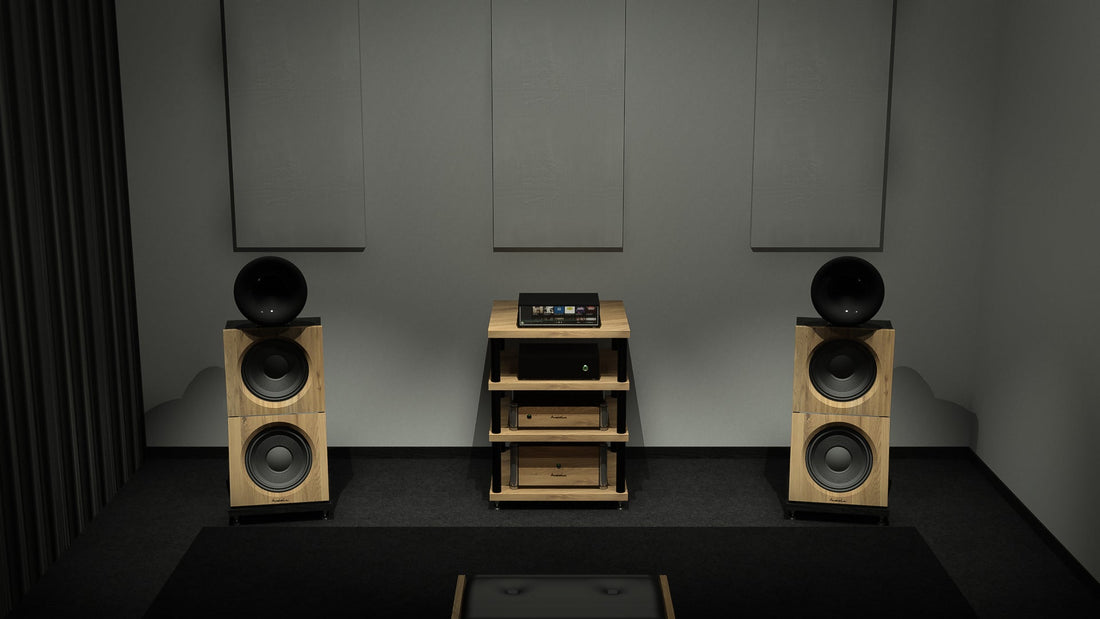
High-Resolution Liquid Music vs Vinyl: Which Should You Choose?
Share
High-Resolution Liquid Music vs Vinyl: Which Should You Choose?
In the audio world, the debate between high-resolution liquid music and vinyl is increasingly heated. Both formats have their supporters, but digital technology is redefining the way we listen to music. Let's look at the main differences and why liquid music may be the better choice for those seeking the highest sound quality.
Fidelity and Sound Quality
Vinyl is an analog format that records the musical signal through physical engravings on a disc. This method introduces inevitable limitations: the maximum dynamic range is around 70 dB, with a frequency response that varies between 20 Hz and 20 kHz, but with attenuations on the high frequencies due to the head and the RIAA equalization process. Furthermore, reproduction is affected by phenomena such as harmonic distortion, surface noise and progressive degradation of the support.
High-resolution liquid music, on the other hand, uses digital technology to ensure reproduction that is more faithful to the original. Formats such as FLAC, WAV, and DSD support resolutions of 24-bit/96kHz or higher, with a theoretical dynamic range that can reach 144 dB in the case of 24-bit. The absence of surface noise and the ability to represent the entire sound spectrum without degradation make it superior in terms of fidelity.
Distortion and Playback Accuracy
Tracking distortion is an inherent problem in vinyl: as the needle approaches the center of the record, linear velocity decreases and intermodulation distortion increases. Records are also subject to wow and flutter (speed variations due to mechanical imperfections in the turntable), which alter the accuracy of playback.
Liquid music has no such problems. Digital files are played back without any speed variations or mechanical distortions. Modern DACs (Digital-to-Analog Converters) ensure precise conversions, with negligible errors thanks to oversampling and advanced anti-aliasing filters, maintaining a flat frequency response and without attenuation. Latency and jitter are further minimized thanks to high-precision clocks and advanced time correction algorithms.
Comparison Table
| Characteristic | Vinyl | High Resolution Liquid Music |
|---|---|---|
| Signal type | Analog | Digital (PCM, DSD) |
| Dynamic range | ~70dB | Up to 144 dB (24-bit) |
| Frequency response | 20 Hz - 20 kHz (with attenuations) | 0 Hz - 96 kHz (depending on format) |
| Surface noise | Present (rustling, crackling) | Absent |
| Distortion | High in the internal grooves | Negligible with good DAC |
| Wear and tear over time | It degrades with use | No degradation |
| Portability | Limited | Total |
| Cost | High (record players, vinyl) | Variable (file, streaming) |
| Sustainability | Impactful physical production | Digital, less impact |
Convenience and Accessibility
Vinyl requires a quality turntable, a well-tuned needle, and regular maintenance to maintain audio quality. Additionally, the physical medium takes up space and limits portability.
Liquid music, on the other hand, is immediately accessible from any device: computer, smartphone, external DAC or music server. High-resolution files can be easily stored and played without degradation over time, making listening more flexible and convenient.
Costs and Sustainability
Buying quality vinyl can be expensive, and record collecting requires ongoing investment. Additionally, vinyl production has a significant environmental impact.
Liquid music, on the other hand, eliminates physical production costs and reduces the ecological impact. High-resolution streaming services, such as Qobuz and Tidal, offer a huge catalog at competitive prices, allowing you to explore new genres without having to buy each album individually.
Conclusion
While vinyl has its nostalgic appeal, high-resolution liquid music represents the future of audiophile listening. With superior sound quality, no mechanical distortion, and greater convenience, digital allows you to enjoy music without compromise. As technology evolves, next-generation DACs and lossless formats will continue to improve, providing a sound experience ever closer to the original recording.
